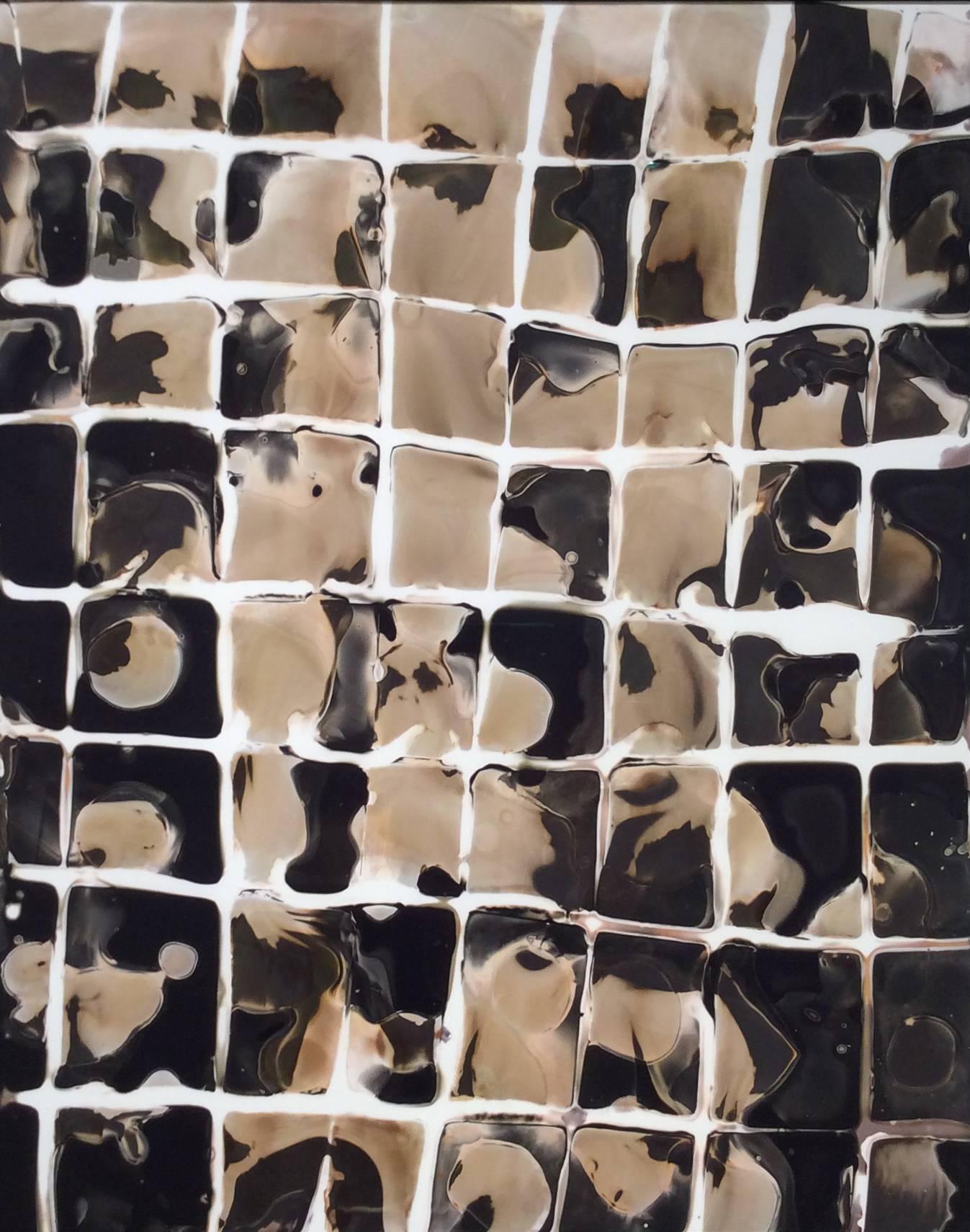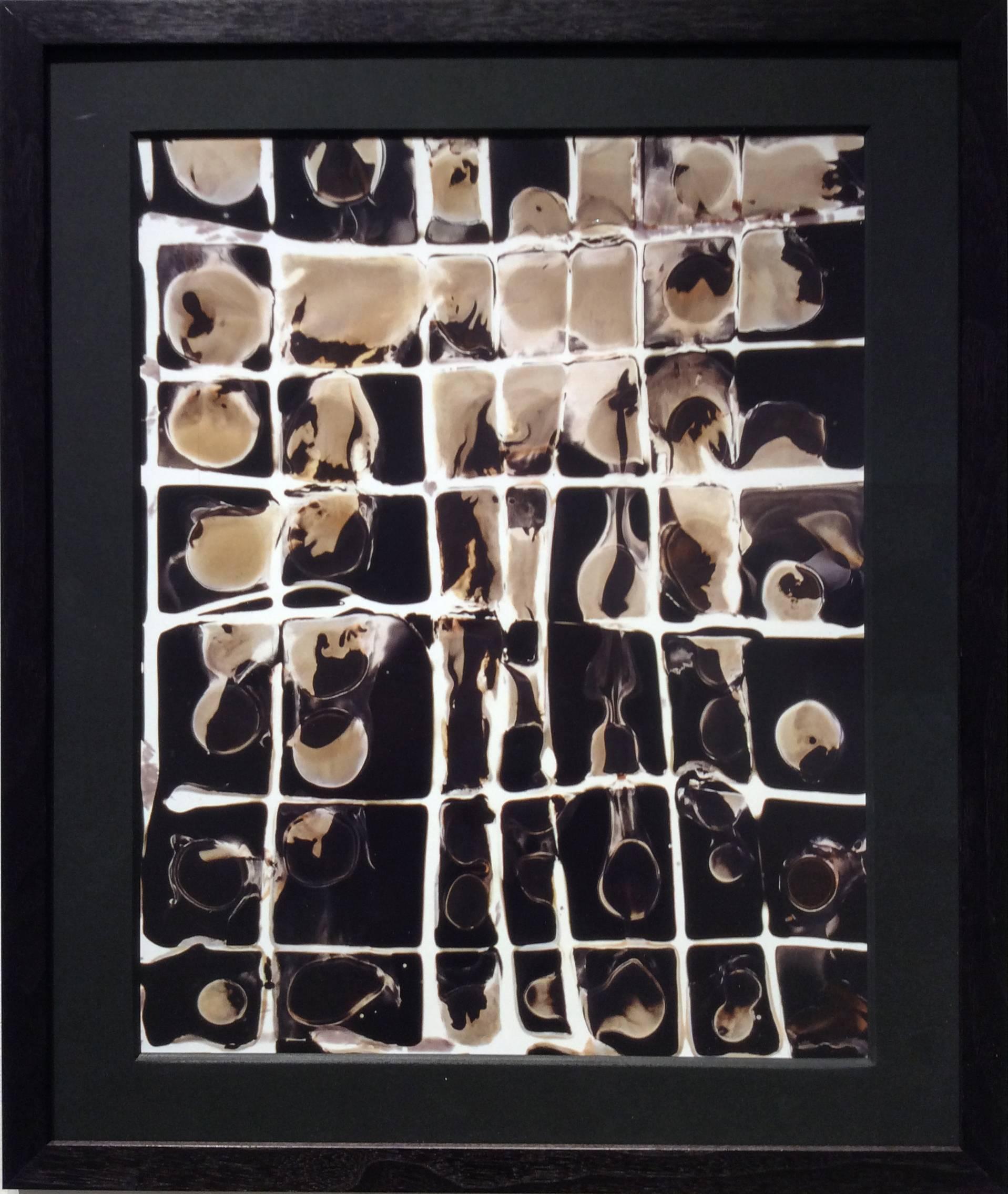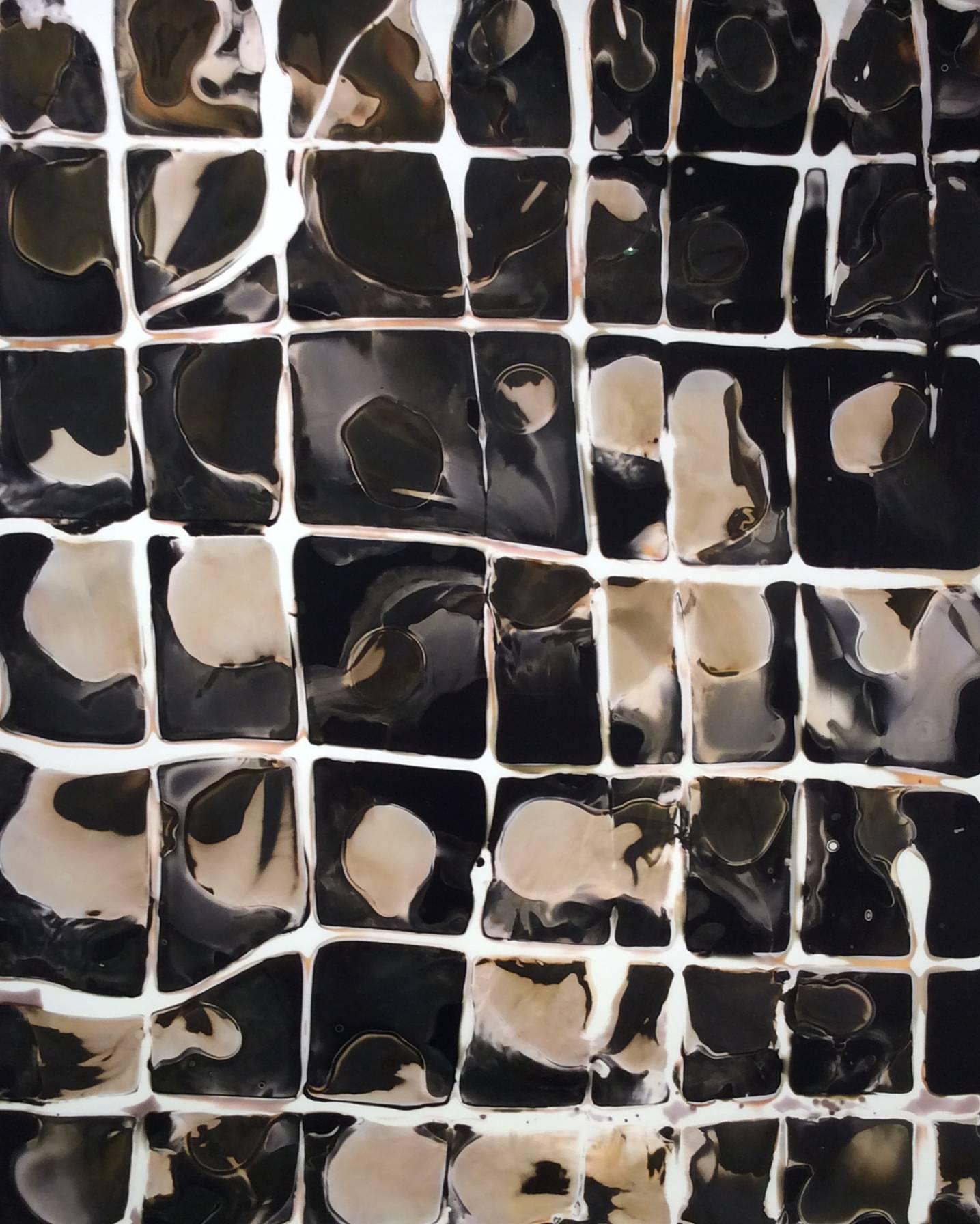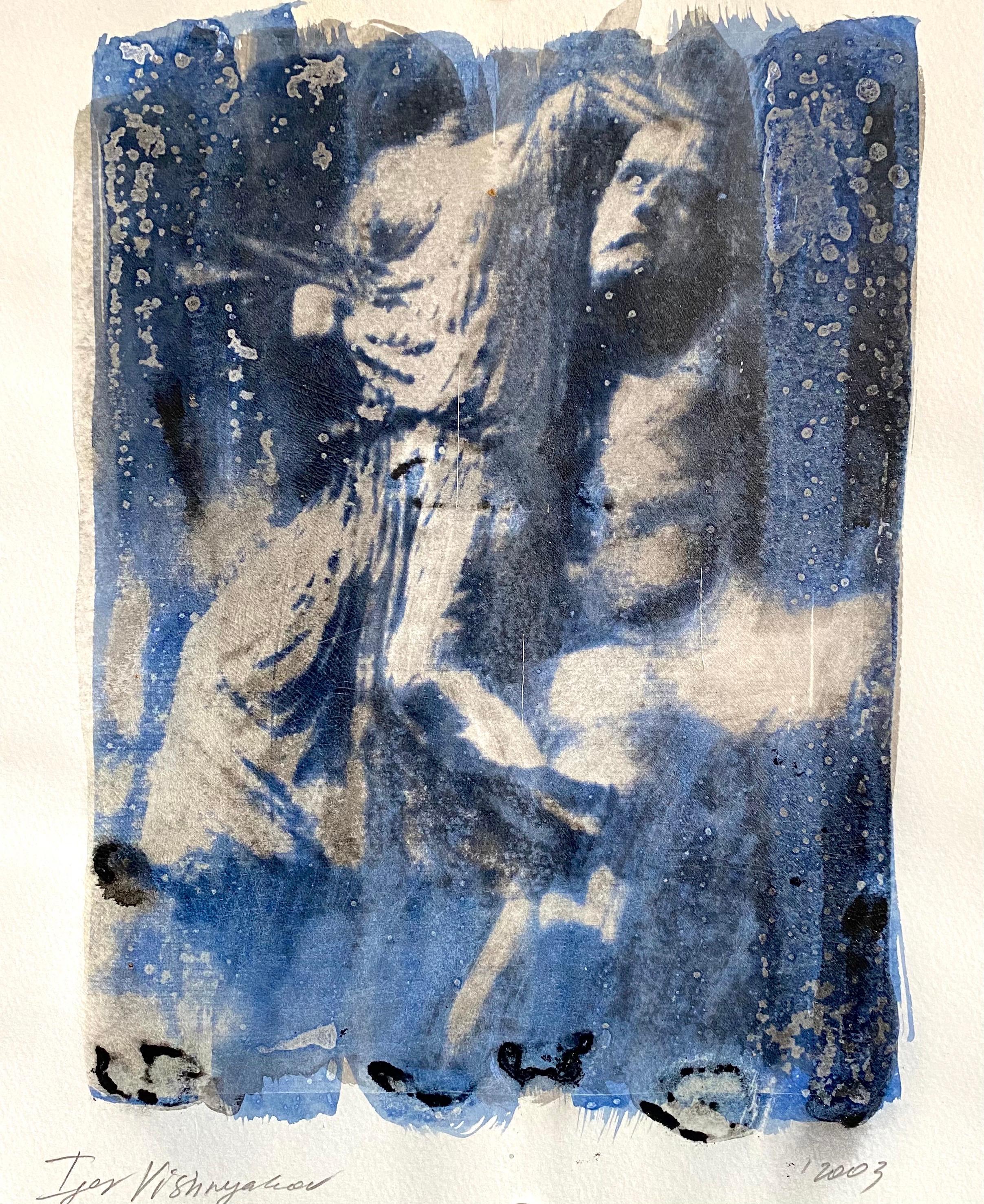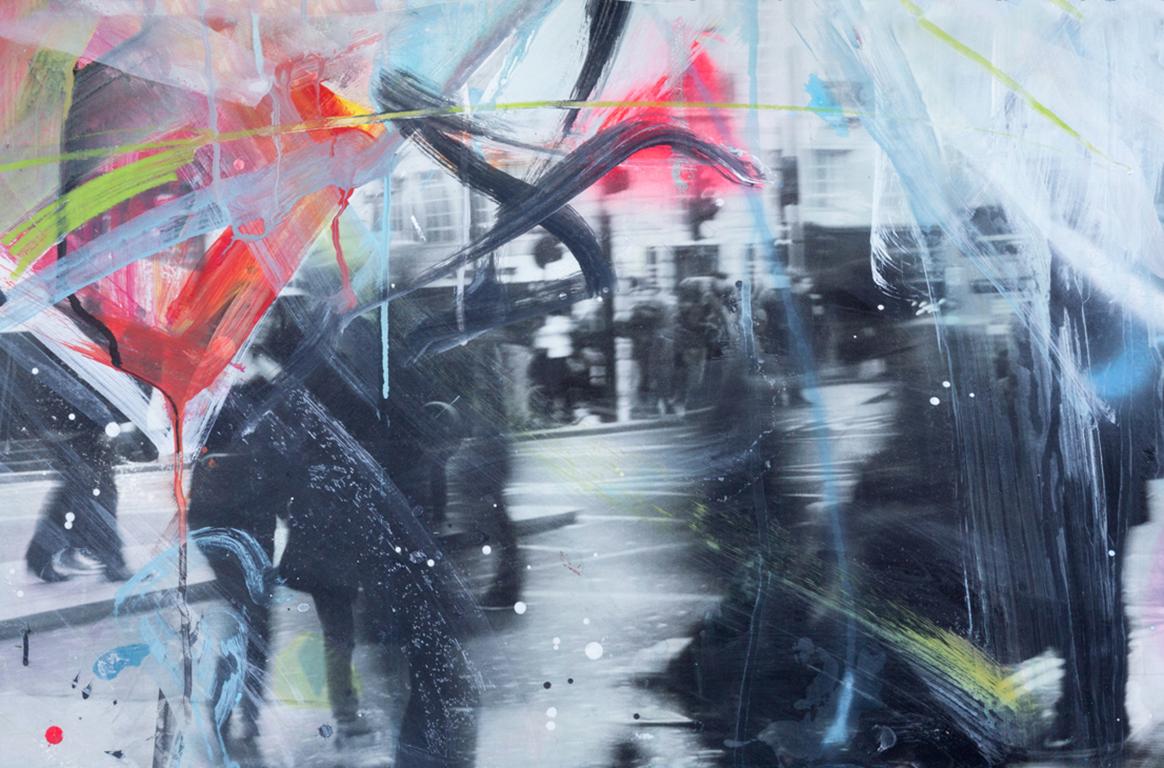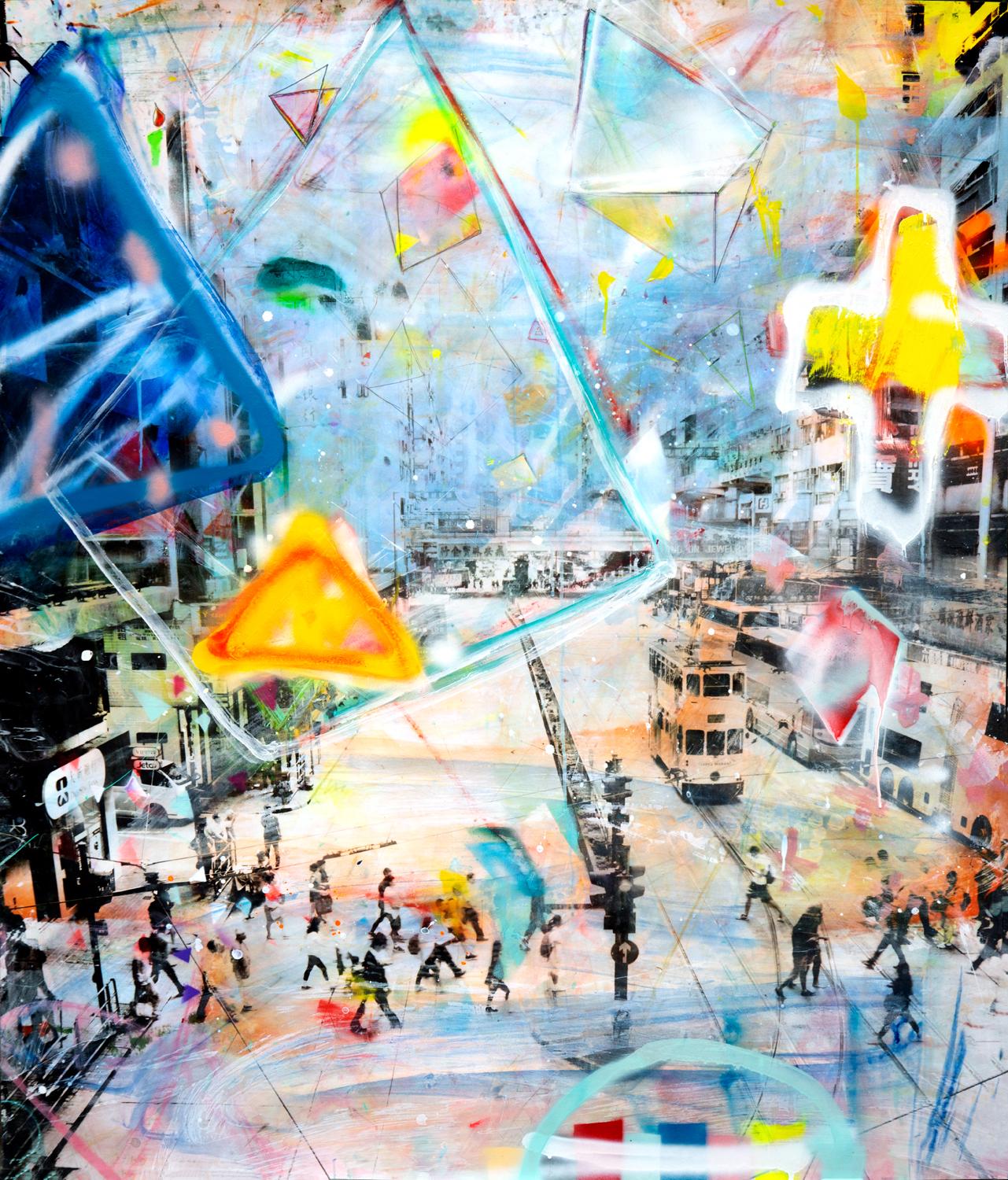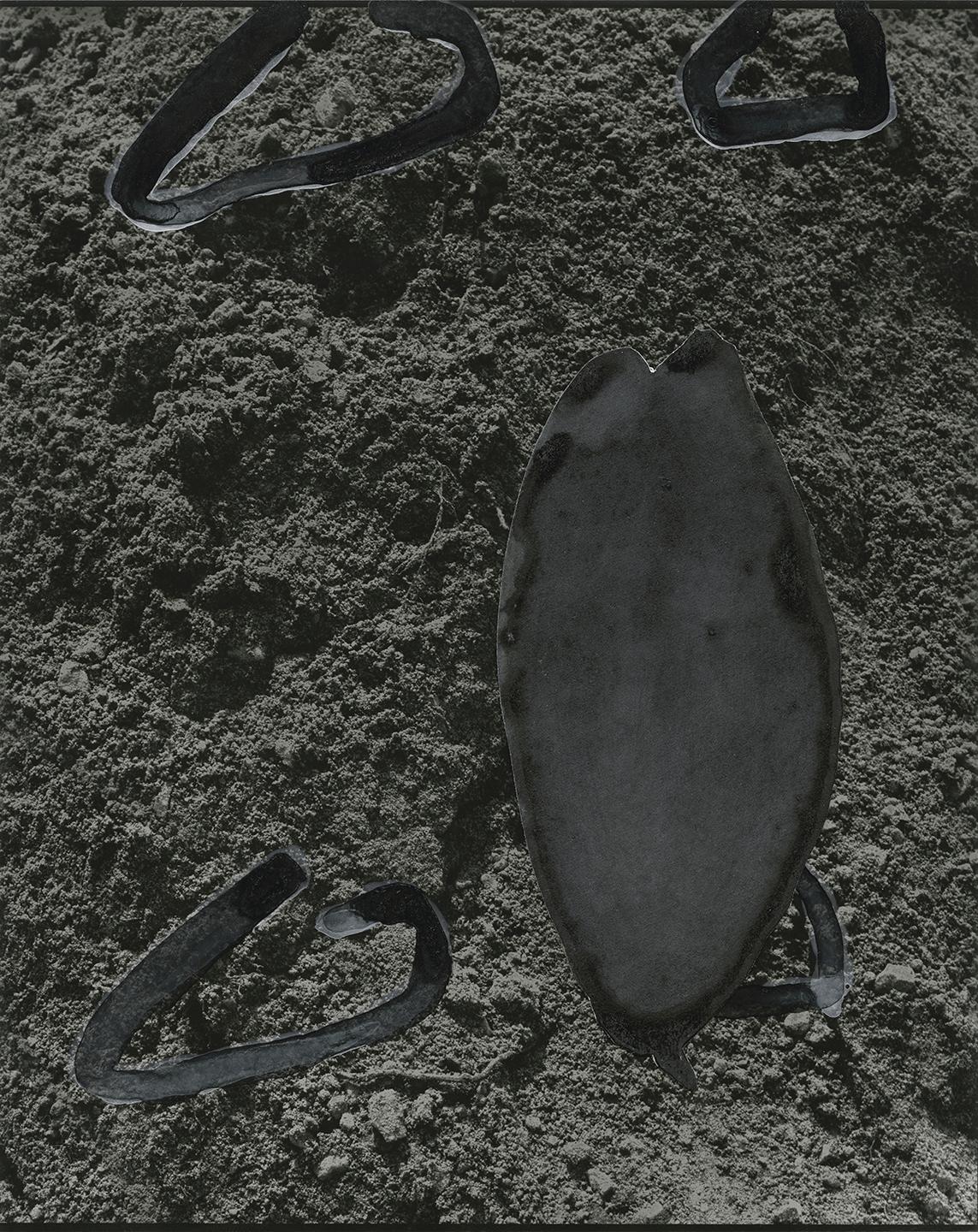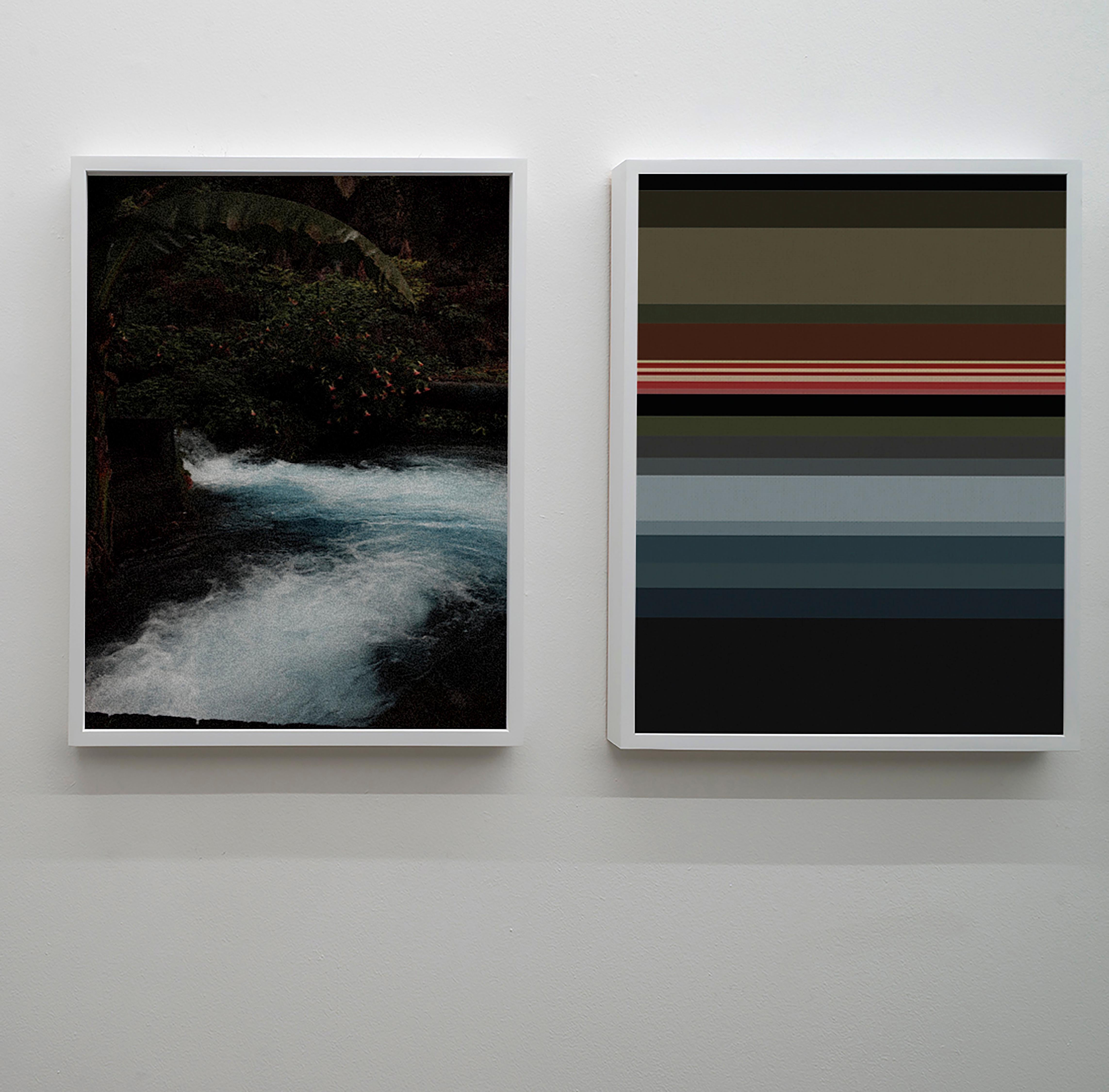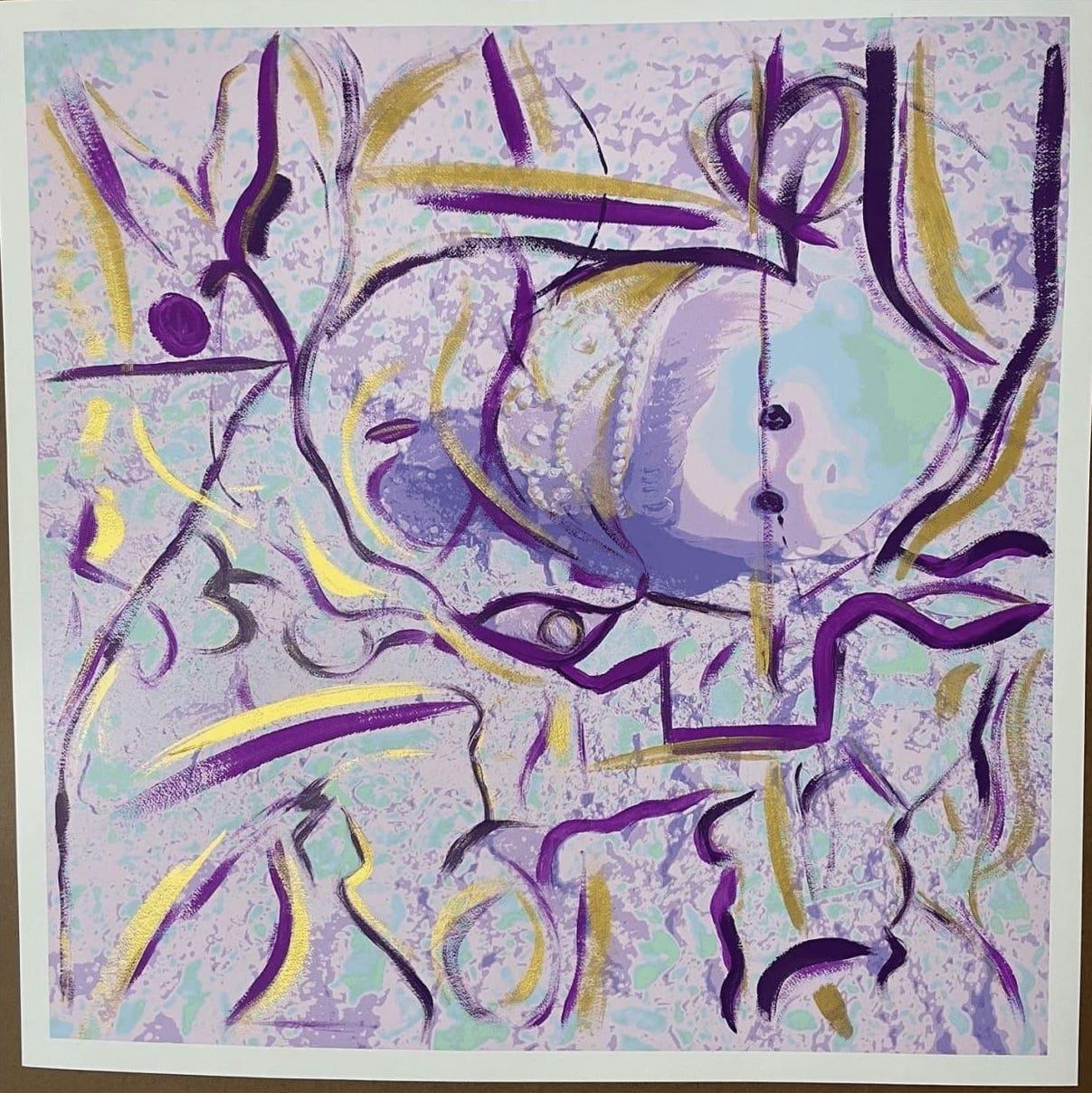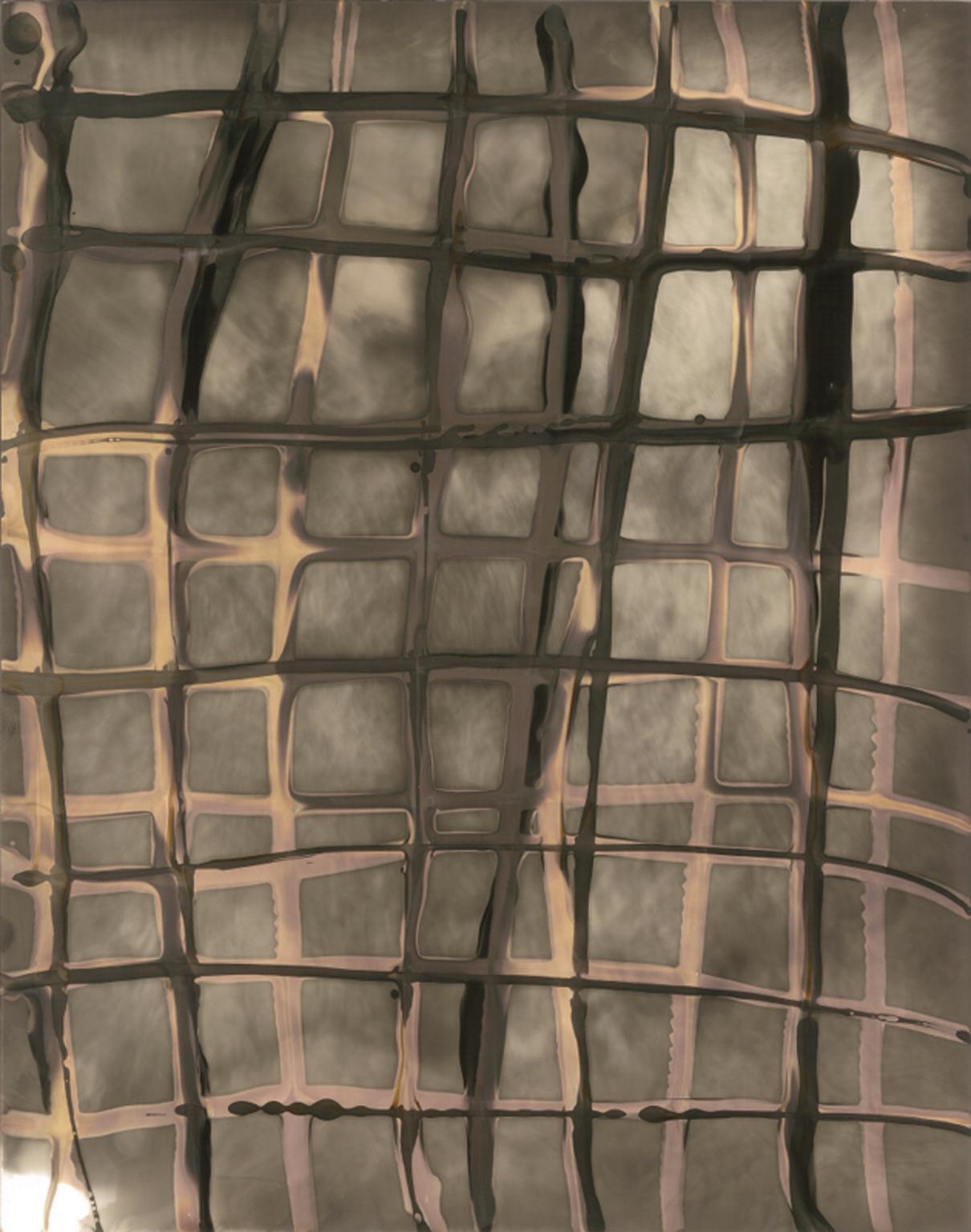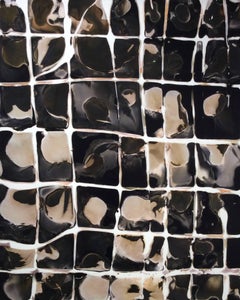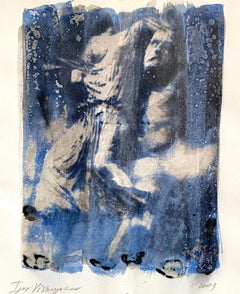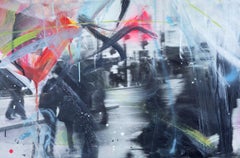
No. 3, Cubes (Abstract Digital Photograph in Earth Toned Palette, Framed)
View Similar Items
Want more images or videos?
Request additional images or videos from the seller
1 of 10
Birgit BlythNo. 3, Cubes (Abstract Digital Photograph in Earth Toned Palette, Framed)2009
2009
About the Item
- Creator:Birgit Blyth (Danish)
- Creation Year:2009
- Dimensions:Height: 25.5 in (64.77 cm)Width: 21.5 in (54.61 cm)Depth: 1.5 in (3.81 cm)
- Medium:
- Movement & Style:
- Period:
- Condition:
- Gallery Location:Hudson, NY
- Reference Number:1stDibs: LU2272395053
About the Seller
5.0
Platinum Seller
These expertly vetted sellers are 1stDibs' most experienced sellers and are rated highest by our customers.
Established in 1991
1stDibs seller since 2013
540 sales on 1stDibs
Typical response time: 2 hours
More From This SellerView All
- No. 1, Cubes (Abstract Digital Photograph in Earth Toned Palette, Framed)By Birgit BlythLocated in Hudson, NYAbstract digital print on black/white photo paper 25.5 x 21.5 inches in custom black stained wood frame with black 8 ply mat and AR non glare glass These energetic prints are digital copies of original handmade monoprints by photographer Birgit Blyth. Without the use of a camera, the artist produced the original chromoskedasic image by applying the photographic chemicals to black and white photo pager and exposing it to light. The rich black, faded gold, and crisp white tones are determined by the different chemicals used and the amount of time they are exposed to light. In this piece, Blyth painted gestural, intersecting lines to create a grid-like pattern that falls back in space. About the artist and work: Birgit Blyth is one of our most innovative and prolific photographers who works in a darkroom yet uses no camera! Blyth has been experimenting with a technique known as Chromoskedasic painting since the early ‘90s and variations on this concept have been shown at the gallery for the last 20 years. The unusual process involves the use of silver particles in black and white photographic paper to scatter light at different wavelengths when exposed. A chemist of sorts, Blyth demonstrates a thorough knowledge of how the various photographic chemicals will react when applied to paper and exposed. Each work is unique with palettes that resonate brilliant tonalities of brown, green, black, and purple. Using this technique, Blyth creates abstract crosshatching grids and most recently has developed a more gestural series of 20 x 16 inch chromoskedasic paintings that explores the ethereal qualities made possible by the unconventional material. Birgit Blyth succeeds at keeping her work fresh and cutting-edge using analog methods that are being quickly replaced elsewhere with digital technology. Artist Resume: Born: Kousted, Denmark Resident in U.S.A. since 1963 Education: Denmark and U.S.A. Project, Inc., Cambridge MA (Photography) DeCordova Museum School, Lincoln MA (Printmaking) Maine Photography...Category
Early 2000s Contemporary Abstract Photography
MaterialsPhotographic Paper, Digital
- No. 2, Cubes (Abstract Cameraless Photograph with checknboard motif, Framed)By Birgit BlythLocated in Hudson, NYAbstract digital print on black/white photo paper 25.5 x 21.5 inches in custom black stained wood frame with black 8 ply mat and AR non glare glass Pairs well with Ref: LU2272395053 These energetic prints are digital copies of original handmade monoprints by photographer Birgit Blyth. Without the use of a camera, the artist produced the original chromoskedasic image by painting with the photographic chemicals directly onto black and white photo pager and exposing it to light. The rich black, faded gold, and crisp white tones are determined by the different chemicals used and the amount of time they are exposed to light. In this piece, Blyth painted gestural, intersecting lines to create a grid-like pattern that falls back in space. About the artist and work: Birgit Blyth is one of our most innovative and prolific photographers who works in a darkroom yet uses no camera! Blyth has been experimenting with a technique known as Chromoskedasic painting since the early ‘90s and variations on this concept have been shown at the gallery for the last 20 years. The unusual process involves the use of silver particles in black and white photographic paper to scatter light at different wavelengths when exposed. A chemist of sorts, Blyth demonstrates a thorough knowledge of how the various photographic chemicals will react when applied to paper and exposed. Each work is unique with palettes that resonate brilliant tonalities of brown, green, black, and purple. Using this technique, Blyth creates abstract crosshatching grids and most recently has developed a more gestural series of 20 x 16 inch chromoskedasic paintings that explores the ethereal qualities made possible by the unconventional material. Birgit Blyth succeeds at keeping her work fresh and cutting-edge using analog methods that are being quickly replaced elsewhere with digital technology. Artist Resume: Born: Kousted, Denmark Resident in U.S.A. since 1963 Education: Denmark and U.S.A. Project, Inc., Cambridge MA (Photography) DeCordova Museum School, Lincoln MA (Printmaking) Maine Photography...Category
Early 2000s Contemporary Abstract Photography
MaterialsPhotographic Paper, Digital
- No. 5, Cubes (Abstract Cameraless Photograph in Black and Neutral, Framed)By Birgit BlythLocated in Hudson, NYAbstract digital print on black/white photo paper 31.5 x 26.5 inches in custom black stained wood frame with black 8 ply mat and AR non glare glass These energetic prints are digital copies of original handmade monoprints by photographer Birgit Blyth. Without the use of a camera, the artist produced the original chromoskedasic image by applying the photographic chemicals to black and white photo pager and exposing it to light. The rich black, faded gold, and crisp white tones are determined by the different chemicals used and the amount of time they are exposed to light. In this piece, Blyth painted gestural, intersecting lines to create a grid-like pattern that falls back in space. About the artist and work: Birgit Blyth is one of our most innovative and prolific photographers who works in a darkroom yet uses no camera! Blyth has been experimenting with a technique known as Chromoskedasic painting since the early ‘90s and variations on this concept have been shown at the gallery for the last 20 years. The unusual process involves the use of silver particles in black and white photographic paper to scatter light at different wavelengths when exposed. A chemist of sorts, Blyth demonstrates a thorough knowledge of how the various photographic chemicals will react when applied to paper and exposed. Each work is unique with palettes that resonate brilliant tonalities of brown, green, black, and purple. Using this technique, Blyth creates abstract crosshatching grids and most recently has developed a more gestural series of 20 x 16 inch chromoskedasic paintings that explores the ethereal qualities made possible by the unconventional material. Birgit Blyth succeeds at keeping her work fresh and cutting-edge using analog methods that are being quickly replaced elsewhere with digital technology. Artist Resume: Born: Kousted, Denmark Resident in U.S.A. since 1963 Education: Denmark and U.S.A. Project, Inc., Cambridge MA (Photography) DeCordova Museum School, Lincoln MA (Printmaking) Maine Photography...Category
Early 2000s Abstract Abstract Photography
MaterialsPhotographic Paper, Digital
$1,400 Sale Price22% Off - No. 4, Cubes (Abstract Cameraless Photograph in Earth Toned Palette, Framed)By Birgit BlythLocated in Hudson, NYAbstract digital print on black/white photo paper 25.5 x 21.5 inches in custom black stained wood frame with black 8 ply mat and AR non glare glass These energetic prints are digital copies of original handmade monoprints by Danish photographer Birgit Blyth. Without the use of a camera, the artist produced the original chromoskedasic image by painting with photographic chemicals directly onto black and white photo pager and exposing it to light. The rich black, faded gold, and crisp white tones are determined by the different chemicals used and the amount of time they are exposed to light. In this piece, Blyth painted gestural, intersecting lines to create a grid-like pattern that falls back in space. About the artist and work: Birgit Blyth is one of our most innovative and prolific photographers who works in a darkroom yet uses no camera! Blyth has been experimenting with a technique known as Chromoskedasic painting since the early ‘90s and variations on this concept have been shown at the gallery for the last 20 years. The unusual process involves the use of silver particles in black and white photographic paper to scatter light at different wavelengths when exposed. A chemist of sorts, Blyth demonstrates a thorough knowledge of how the various photographic chemicals will react when applied to paper and exposed. Each work is unique with palettes that resonate brilliant tonalities of brown, green, black, and purple. Using this technique, Blyth creates abstract crosshatching grids and most recently has developed a more gestural series of 20 x 16 inch chromoskedasic paintings that explores the ethereal qualities made possible by the unconventional material. Birgit Blyth succeeds at keeping her work fresh and cutting-edge using analog methods that are being quickly replaced elsewhere with digital technology. Artist Resume: Born: Kousted, Denmark Resident in U.S.A. since 1963 Education: Denmark and U.S.A. Project, Inc., Cambridge MA (Photography) DeCordova Museum School, Lincoln MA (Printmaking) Maine...Category
Early 2000s Abstract Abstract Photography
MaterialsPhotographic Paper, Digital
- Grid. No 6 (Contemporary Framed Gestural Lattice Motif Painting in Neutral tone)By Birgit BlythLocated in Hudson, NYGrid No.6, 2009 (Contemporary Framed Abstract Grid in Neutral Shades Black & Coffee) by Birgit Blyth 40" X 25" paper vertical chromoskedesic monoprint 44 x 29 inches framed, custom frame with black wood molding and anti-reflective glass This contemporary, abstract style chromoskedasic monoprint was created by experimental photographer, Birgit Blyth. Without the use of a camera, the artist produced this chromoskedasic image by applying the photographic chemicals to black and white photo pager and exposing it to light. The variety of caramel, toffee, brown and black tones is determined by the different chemicals used and the amount of time they are exposed to light. Here, the artist paints with the photographic materials in a gestural, linear motion. Beautiful hues of coffee, caramel, brown, grey, and black intersect to create unique abstract, intersecting grid patterns that resembles a basket weave motif. The photograph is complimented with a black metal frame with non-glare glass. It is equipped with sturdy wire on the back for instant and professional quality hanging. About the artist and work: Birgit Blyth is one of our most innovative and prolific photographers who works in a darkroom yet uses no camera! Blyth has been experimenting with a technique known as Chromoskedasic painting since the early ‘90s and variations on this concept have been shown at the gallery for the last 20 years. The unusual process involves the use of silver particles in black and white photographic paper to scatter light at different wavelengths when exposed. A chemist of sorts, Blyth demonstrates a thorough knowledge of how the various photographic chemicals will react when applied to paper and exposed. Each work is unique with palettes that resonate brilliant tonalities of brown, green, black, and purple. Using this technique, Blyth creates abstract crosshatching grids and most recently has developed a more gestural series of 20 x 16 inch chromoskedasic paintings that explores the ethereal qualities made possible by the unconventional material. Birgit Blyth succeeds at keeping her work fresh and cutting-edge using analog methods that are being quickly replaced elsewhere with digital technology. Though Birgit Blyth began her photographic career using conventional photographic methods, she quickly became more interested in alternative processes. In the mid 1990’s a colleague showed her an article in Scientific American and it was here that she first discovered the technique called “chromoskedasic” painting, which would eventually lead her to fully finding her voice as a photographer. Blyth had always aligned herself with and been moved by abstract expressionist painting. The series of veil paintings by post-abstract expressionist, Morris Louis, was especially inspiring to her and caused her to ask herself how she could do similar interpretations photographically. In “chromoskedasic” painting, she found the answers and would begin on a new path in her artwork. The term “chromoskedasic” is derived from Greek roots meaning color by light scattering. Developed by a photographer named Dr. Dominic Man-Kit Lam, this process exploits the capability of silver particles in black and white photographic paper to “scatter” light at different wavelengths when exposed to light and chemicals. In her mastery of this photochemical drawing process, Blyth has painted lush washes of color into her own “Veil Series;” she has envisioned landscapes, both rural and urban, with melting swirls and marbled colors into rich palettes of toffee and lead. She has used this essentially experimental process to help her “see” the world around her. Blyth says she continues to be fascinated by the process because it requires “a combination of discipline, experimentation, and imagination, making possible a wonderful balance between control and surprise.” Because the chromoskedasic work is all analog, Blyth spends much of her studio time in the darkroom, which has become a rarity in the current world of digital photography. She does however, continue her preference for experimentation in numerous directions, even employing aspects of the digital age – this exhibit will also feature a new series of pieces created with the now defunct but much loved SX-70 polaroid camera, scanned and archivally printed on 24” x 24” fine cotton rag paper. Whatever the process, Blyth’s work is, as the painter and poet, Peter Sacks noted, a blend of “precision and mystery, of articulation and atmosphere.” Her images leave us with the feeling of ongoing action despite the apparent stillness; of qualities both dreamy and stark as light hits a stand of birch trees in a valley or a group of buildings in New York City. As Morris Louis evolved a style of painting that produced a complete integration of paint and canvas, so too has Blyth, with photo paper and chemicals, created a perfect integration of method and content. Artist CV: Born: Kousted, Denmark Resident in U.S.A. since 1963 Education: Denmark and U.S.A. Project, Inc., Cambridge MA (Photography) DeCordova Museum School, Lincoln MA (Printmaking) Maine Photography...Category
Early 2000s Abstract Abstract Photography
MaterialsPhotographic Paper, Monoprint
- Grid. No 5 (Contemporary Framed Abstract Grid in Black & Coffee)By Birgit BlythLocated in Hudson, NYunique chromoskedasic monoprint on B&W photo paper 14 x 11 inches unframed 20 x 16 inches in black metal frame with non-glare glass This contemporary, abstract style chromoskedasic ...Category
2010s Abstract Abstract Photography
MaterialsPhotographic Paper, Monoprint
You May Also Like
- Post Soviet Russian Avant Garde Photograph Mixed Media Gum Arabic Photo PaintingBy Igor VishnyakovLocated in Surfside, FLIgor Vishnyakov is a Russian Postwar & Contemporary artist who was born in 1968 in Moscow. Igor spent his childhood in Africa and Southeast Asia. After returning to Moscow in the mid-80’s he started painting and photographing key figures of the Russian avant-garde movement, and began to widely exhibit his work. In his youth Vishnyakov became a significant figure in the Moscow and St. Petersburg art community. He became a permanent member of the New Academy of Fine Arts soon after it was founded by Timur Novikov in 1989. He was first made aware of alternate photographic printing processes while studying in the New Academy. Amongst other photographers such as Novikov, Egelskiy, Alexandrov, Ostrov and other Academy members, Vishnyakov was engaged in reviving precious photo printing techniques widely spread in the XIX century, such as gum arabic pigment print, bromoils, calotypes, chirotypes, carbon process, Savrasov and Sery methods and many others. In 1990 Vishnyakov moved to New York to establish himself as a reporter and then as a fashion photographer and soon got his work published in a dozen of American and European magazines. Soon after, he continued his art education in the New York studio of a French painter, Emmanuel Flipo. Although living as an emigrant, Vishnyakov retained his connections with the Russian art world, especially with the New Academy, and participated in a number of group exhibitions. In 1997 he joined the movement that gathered neo-academics from Moscow and St. Petersburg. His very own established technique is mixed media, combining classical photography, gum arabic pigment printing, tempera painting and printing. The smallest details, such as the peculiarities and nuances of applying an emulsion, with the pressure of brush strokes, or paper texture, give a strange, mystic significance, to his whole work. Photographic details show through and then dissolve in the layers of paint, leaving the image slightly unexposed and the philosophical background unrevealed, impelling the viewer to come back over and over again. Vishnyakov’s work has a feeling of ephemerality, conveying a sense of never being truly finished, leaving the viewer in a truly meditative state. In his never ending reconnaissance of an ideal image of beauty, Vishnyakov is inspired by esoteric and Oriental spiritual practices. Everything finds a place in his art, whether it is Tao doctrine of five elements, symbols of Tarot’s Major Arcana, majestic temples of ancient India or plain netsuke figures. Whatever it is, his major principle is harmony, both inner and outward, spiritual and visual. Vishnyakov also teaches photography in America and Japan, practices kung fu and remains a Shaolin monk’s novice, a practice he has been doing for eleven years. At present he is living between New York and Moscow with his muse, the Russian supermodel, and talented painter, Sasha Pivovarova. SELECTED GROUP SHOWS Beauty of the Beast, Mimi Ferzt Gallery New York Mystical Neo-Realism, Barbarian Art Gallery Passion Bild. Bern Kunstmuseum Bern MIR Faberge, Royal Academy of Arts, London Russian House photography...Category
Early 2000s Contemporary Abstract Photography
MaterialsPhotographic Paper, Mixed Media
- Unforgotten Series #2 - Handpainted photography, colorful abstract urban sceneBy Alberto SanchezLocated in Dallas, TX"Unforgotten Series No 2" is an archival pigment print on fine art paper, mounted on birch panel and resin coated. This is a wonderful colorful and abstract urban inspired artwork. ...Category
2010s Contemporary Abstract Paintings
MaterialsBirch, Wood Panel, Archival Paper, Resin, Photographic Paper
- Paradox, Hand-painted photography, bold colorful abstract New York urban sceneBy Alberto SanchezLocated in Dallas, TX"Paradox" is a wildly colorful, abstract painting layered on top of a black and white photographic print. This is a wonderful bold abstract urban New York inspired scene. The piece ...Category
2010s Contemporary Abstract Paintings
MaterialsEpoxy Resin, Mixed Media, Acrylic, Photographic Paper
- Unforgotten Series #6 - Handpainted photography, colorful abstract, graphic pinkBy Alberto SanchezLocated in Dallas, TX"Unforgotten Series No 6" is an archival pigment print on fine art paper, mounted on birch panel and resin coated. This is a wonderful colorful abstract artwork with text and pink ba...Category
2010s Contemporary Abstract Paintings
MaterialsResin, Birch, Wood Panel, Archival Paper, Photographic Paper
- OO OO - digital photo print with enamel, collaborative pieceLocated in Signal Mountain, TNThis piece is a collaboration between Sarah Phyllis Smith and Douglas Degges. Douglas Degges (b. Shreveport, LA) is an artist and educator currently based in Mansfield Center, CT w...Category
2010s Contemporary Abstract Paintings
MaterialsAcrylic, Digital
- Post Soviet Russian Avant Garde Art Photograph Mixed Media Gum Bichromate PhotoBy Igor VishnyakovLocated in Surfside, FLIgor Vishnyakov is a Russian Postwar & Contemporary artist who was born in 1968 in Moscow. Igor spent his childhood in Africa and Southeast Asia. After returning to Moscow in the mid-80’s he started painting and photographing key figures of the Russian avant-garde movement, and began to widely exhibit his work. In his youth Vishnyakov became a significant figure in the Moscow and St. Petersburg art community. He became a permanent member of the New Academy of Fine Arts soon after it was founded by Timur Novikov in 1989. He was first made aware of alternate photographic printing processes while studying in the New Academy. Amongst other photographers such as Novikov, Egelskiy, Alexandrov, Ostrov and other Academy members, Vishnyakov was engaged in reviving precious photo printing techniques widely spread in the XIX century, such as gum arabic pigment print, bromoils, calotypes, chirotypes, carbon process, Savrasov and Sery methods and many others. In 1990 Vishnyakov moved to New York to establish himself as a reporter and then as a fashion photographer and soon got his work published in a dozen of American and European magazines. Soon after, he continued his art education in the New York studio of a French painter, Emmanuel Flipo. Although living as an emigrant, Vishnyakov retained his connections with the Russian art world, especially with the New Academy, and participated in a number of group exhibitions. In 1997 he joined the movement that gathered neo-academics from Moscow and St. Petersburg. His very own established technique is mixed media, combining classical photography, gum arabic pigment printing, tempera painting and printing. The smallest details, such as the peculiarities and nuances of applying an emulsion, with the pressure of brush strokes, or paper texture, give a strange, mystic significance, to his whole work. Photographic details show through and then dissolve in the layers of paint, leaving the image slightly unexposed and the philosophical background unrevealed, impelling the viewer to come back over and over again. Vishnyakov’s work has a feeling of ephemerality, conveying a sense of never being truly finished, leaving the viewer in a truly meditative state. In his never ending reconnaissance of an ideal image of beauty, Vishnyakov is inspired by esoteric and Oriental spiritual practices. Everything finds a place in his art, whether it is Tao doctrine of five elements, symbols of Tarot’s Major Arcana, majestic temples of ancient India or plain netsuke figures. Whatever it is, his major principle is harmony, both inner and outward, spiritual and visual. Vishnyakov also teaches photography in America and Japan, practices kung fu and remains a Shaolin monk’s novice, a practice he has been doing for eleven years. At present he is living between New York and Moscow with his muse, the Russian supermodel, and talented painter, Sasha Pivovarova. SELECTED GROUP SHOWS Beauty of the Beast, Mimi Ferzt Gallery New York Mystical Neo-Realism, Barbarian Art Gallery Passion Bild. Bern Kunstmuseum Bern MIR Faberge, Royal Academy of Arts, London Russian House photography...Category
Early 2000s Conceptual Abstract Photography
MaterialsMixed Media, Photographic Paper
